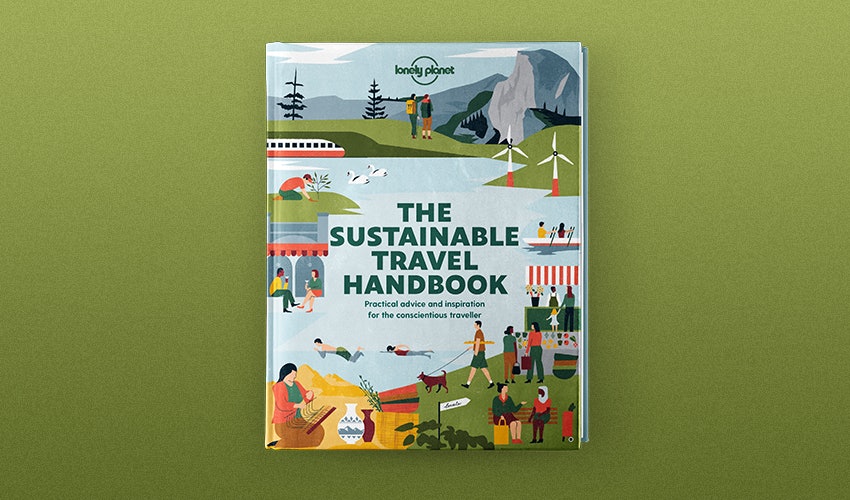
The 30 best countries, cities and regions to visit in 2025

Nov 20, 2020 • 3 min read

Use public transport or, even better, a local bike-share scheme © Giorgio Fochesato / Getty Images
With the travel industry responsible for 8% of total global emissions, every action you take to curb your carbon is worthwhile. Here are some things to consider ahead of your next trip.
If you fly, reduce in-flight emissions by choosing a carbon-efficient airline, a direct flight and a seat in coach (economy) class instead of business. Other tactics include lowering window shades (to help keep the plane cool), bringing your own amenities and food (or, failing that, pre-ordering a plant-based meal).
No matter what type of transport you’ll be taking to reach your destination, or once you get there, a lighter suitcase requires less energy to transport.
Taking public transport (or even better, a cycle rickshaw) won’t only help to reduce emissions, but you’ll also tick off a classic local experience. Many global cities are now equipped with affordable bike-, e-bike or scooter-share facilities.
Electric vehicle (EV) infrastructure is improving around the world every year. And while major ride-share apps Uber and Lyft have yet to introduce EVbooking systems, both companies are currently incentivizing drivers to make the switch over to electric vehicles.
Low-carbon hotels generally run on renewable energy, use energy-saving lights and other appliances, recover rainwater, recycle and use local products. Slash more emissions by foregoing housekeeping and minimizing your electricity and water usage.
From walking and cycling tours to non-motorized snorkeling and diving excursions, carbon-light activities are better for your health as well as the health of the planet.
Typical tourist souvenirs create a triple emissions whammy: they’re made from plastic or chemically modified fabrics, in emissions-belching factories, and are transported in gas-guzzling trucks, ships or planes.

Sampling regional delicacies at local-run stalls and restaurants is one of the great joys of travel, and choosing foods that are grown and produced locally helps to reduce food miles (emissions created by transporting food). Small farms are also more likely to adopt eco-friendly practices like avoiding toxic pesticides – ask for info before you buy.
With greenhouse gas emissions from agribusiness on track to surpass that of all other sectors, including energy, transport and industry, the single best way of reducing emissions on the road (aside from not flying) is to lower your intake of meat, particularly red meat, which creates the most livestock emissions.
Every product you use on your trip requires energy to manufacture, more energy to recycle, and releases emissions when it breaks down. By curbing waste whenever possible, you’ll also curb emissions.
From Cape Town to Kathmandu, many travel hotspots around the world struggle with water shortages. By using less water, we can not only help to reduce pressure on the local water supply, but also help to slash the emissions created by treating and pumping water.
Planes aren’t the only form of transport that spew out carbon. US-based offCents tracks and offsets car, train and plane trips, while Swiss non-profit MyClimate also offsets car journeys, cruises, events and more. Several subscription-based apps offer a one-stop-shop approach to carbon offsetting. Wren calculates a monthly offset fee based on your lifestyle (including travel); you can choose which carbon-reducing project to donate the cash to each month.
There’s not always time to line-dry travel gear when you’re on the move, but with one dryer load using five times more electricity than washing, it’s worth packing a travel clothes line to use when you can.

This excerpt is from The Sustainable Travel Handbook: Practical advice and inspiration for the conscientious traveller, published by Lonely Planet in November 2020. Order your copy at the online shop.
How to be a responsible wildlife tourist
Innovative sustainable tourism attractions around the world
What a sustainable restart to travel could look like